23 June, 1953; Death anniversary of Dr. Syama Prasad Mookerjee, who sacrificed his life for the cause of united India
23 Jun 2023 10:54:31
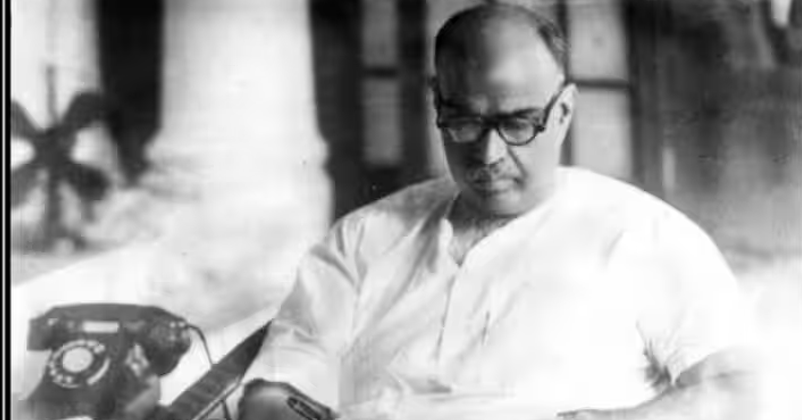
Executive Summary
Dr. Syama Prasad Mookerjee (6 July 1901 – 23 June 1953) was an Indian politician, barrister and academician, who served as the Minister for Industry and Supply in Prime Minister Jawaharlal Nehru's cabinet. As mark of his protest against the Nehru-Liaquat Pact, Mookerjee resigned from Nehru's cabinet. He founded the Bharatiya Jana Sangh, the predecessor to the Bharatiya Janata Party, in 1951 with the help of the Rashtriya Swayamsevak Sangh.
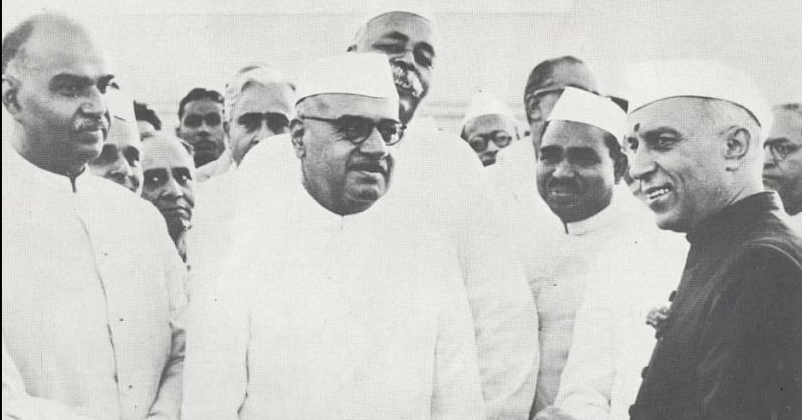
He was also the president of Akhil Bharatiya Hindu Mahasabha from 1943 to 1946. He died in the custody of Jammu and Kashmir Police in 1953.He was provisionally diagnosed of a heart attack and shifted to a hospital but died a day later. In 2004, ex-Prime Minister Atal Bihari Vajpayee had claimed that he was murdered in a "Nehru conspiracy".
Key Points
- India fell mainly because her people were at the critical hour divided and disorganised. Her influence waned when the forces of disintegration, political and social, were at work. If we left our neighbours alone, we revelled in internal strife which ceased for a time when great kings like Asoka and Akbar ruled over the destinies of India – mighty men, who sought to unite the teeming millions of this vast sub-continent by the bond of a common aspiration and a passionate longing for the eternal code of righteous conduct, charity and understanding. A strong and united India fearing no one and loving all , brought messages of peace and goodwill to distracted world. But as soon as the sceptre dropped from their hands, when the grip over the country was loosened through weak and short-sighted successors, when narrow selfishness and mutual jealousy and distrust overpowered our souls, when local feuds and religious strife raised their ugly heads giving rise to social exclusiveness and moral decadence, unity was lost; freedom, man’s priceless treasure, disappeared; the country broke into fragments and relapsed into a state of conflict and struggle.
Speech delivered at Patna University Convocation on 27th November 1937.
- In India also, for century, education imparted through the medium of a foreign language has unduly dominated its academic life and it has now produced a class of men who are unconsciously so denationalised that any far reachingproposal for the recognition of the Indian languages as the vehicle of teaching and examination up to the highest University stage is either ridiculed as impossible or branded as reactionary. But I plead earnestly for the acceptance of this fundamental principle not on account of any blind adherence to things that I claim as my own but out of a firm conviction that the fullest development of the mind of a learner is possible only by this natural approach and also that by this process alone can there be a great revival of the glory and richness of the Indian languages.
Speech delivered at Agra University Convocation on 23rd November 1940.
- Political and social justice requires, not the disintegration of a country and destruction or humiliation of a class which shows initiative, intelligence and drive, but equality of opportunity for all, genuine freedom for self-fulfilment, in which all men irrespective of caste or creed may share.
Speech delivered at Benaras Hindu University Convocation on 1st December 1940.
- A nation that fails to take pride in its past achievements or to take inspiration therefrom, can never build up the present or plan for the future. A weak nation can never attain greatness.
Dr. Syama Prasad Mookerjee Quoted from Talreja, K. M. (2000). Holy Vedas and holy Bible: A comparative study. New Delhi: Rashtriya Chetana Sangathan.
- Generally speaking, an Indian university must regard itself as one of the living organs of national reconstruction. It must discover the best means of blending together both the spiritual and the material aspects of life. It must equip its alumni irrespective of caste, creed or sex, with individual fitness, not for its own sake, not for merely adorning varied occupations and professions, but in order to teach them how to merge their individuality in the common cause of advancing the progress and prosperity of their motherland and upholding the highest traditions of human civilisation.
Speech delivered at Nagpur University Convocation on 5th December 1936.
- I would also ask you to fulfil in an abundant measure your obligation for the revival of the glory of Hindu culture and civilisation, not from a narrow or bigoted point of view but for strengthening the very root of nationalism in this country. In this great land of ours where twenty-eight crores of Hindus live, the word Hindu sometimes stinks in the nostrils of many a son of India.
Speech delivered at Benaras Hindu University Convocation on 1st December 1940.
-
Biography
Dr. Syama Prasad Mookerjee ji was born in Calcutta on July 6, 1901. His father was sir Ashutosh Mookerjee and was a well-known educationist. His mother's name was jjgmayaDebi. Uma prasad Mukhopadhyay was his younger brother. Mookerjee did his matriculation in 1917 and received his B.A. In 1921. Then he did an M.A. in Bengali and passed it with first division. After acquiring the law degree in 1923, he went abroad and returned home as a barrister from England in 1926. After his father's death in 1924, he registered for advocacy in the Calcutta high court.
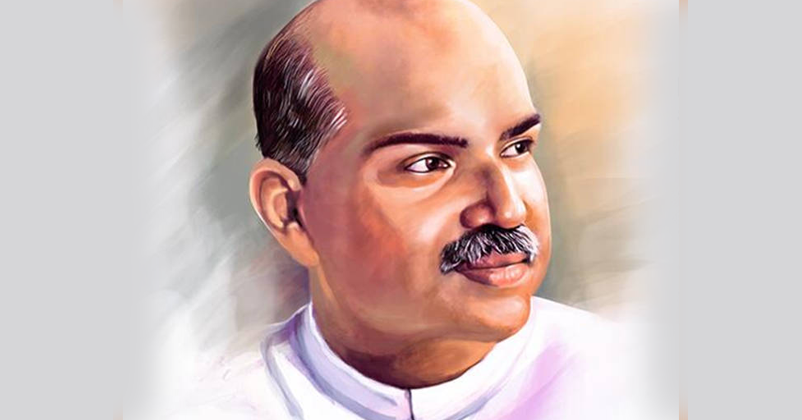
Following his father, he too had achieved remarkable successes in the field of education at a young age. At a young age of 33, he became the vice-chancellor of Calcuttauniversity. He was the youngest vice-chancellor to be appointed to the post. Dr. Mookerjee continued at this post till 1938.
In 1937, he invited Guru Rabindranath Tagore to speak in Bengali at the convocation of Calcutta university. It was the first time in the history of any university in Bharat that someone has delivered a convocation speech in Bharatiyalanguage.
As Educationist
Vice Chancellor, University of Calcutta, for two successive terms-1934-38. President, Post- graduate Councils in Arts and Science for successive years. Dean of the Faculty of Arts, Member and then Chairman, Inter-University Board. During the four years of his service as the Vice-Chancellor, SyamaPrasad did not spare time, energy, health, convenience or anything worth having in life; where they stood in the way of the performance of what he considered his duty and this he did against the advice of his doc- tors. He initiated certain new departments and courses and developed and improved existing ones. His activities as Vice-Chancellor may be summed up as hereunder:
(I) Without any encouragement from the Government of the day he put into effect a scheme for agricultural education and introduced the diploma course in Agriculture. He was deeply interested in women’s education and implemented noteworthy scheme with the endowment of late Viharilal Mitra.
(II) the organization of the Teacher’s Training Department and the introduction of short term training courses including a vacation course to provide trained teachers for our schools; the establishment of Chinese and Tibetan studies; the foundation of the Asutosh Museum of Indian Art and Fine Arts Gallery; the work of archaeological excavations undertaken by the University; the establishment of the Appointment and Information Board: the construction of the new Central Library Hall with research and reading room facilities on modern lines. Introduction of Hindi in the B.A course and of Honors courses in Bengali, Hindi and Urdu as second languages -- these were some of his achievements.
(III) At his instance, a Bengali Paribhasa of scientific terms was prepared and published and a special scheme for training students for public services examination was put through.
(IV) A special series of Bengali publications in different branches of knowledge was undertaken. The series was intended for the benefit of students and general readers. Bengali spellings were standardized on his initiative.
(V) The college code was formulated for the first time during his Vice-Chancellorship and the new Matriculation Regulations were framed and the age restriction of students was abolished.
(VI) The systems of compartmental examinations and concessions to failed students for appearing at examinations without getting themselves admitted into colleges, were introduced during the tenure of his office.
(VII) The question of giving military training to students engaged his serious attention and in spite of discouraging factors, he succeeded in initiating military training course in our scheme of studies. This was no mean achievement in the days when he was Vice-Chancellor.
(VIII) The welfare of the younger generation and of the country at large was the ideal he set before himself and with single-minded devotion he laboured hard to attain it. To this end he took step to improve and expand the Student’s Welfare Department for the promotion of the physical health of our pupils and abolished hostels reserved for students coming from the so called backward class providing accommodation for them in the general hostels and messes attached to colleges. Primarily intended to create the spirit of brotherhood among them. Syama Prasad saw the special reduced seat-rents were charged from them.
(IX) It was during his Vice-Chancellorship that the University Foundation Day (i.e. January 24) was celebrated every year. Students of different colleges attended the ceremony with banners and badges and teachers of colleges and schools also attended it. This was an attempt at bringing teachers and students into closer personal relationship.
(X) During his time, a scheme was initiated in the Applied Chemistry department for imparting training in large-scale production of certain industrial goods.
(XI) Invited Rabindranath Tagore to give Convocation Address in Bengali in 1937, for the first time.
The beginning of political life
Dr Mookerjee’s political career began in 1929 when he entered the Bengal legislative council on a congress party ticket. But he resigned when the congress decided to boycott the legislative council. Then he contested as an independent candidate and was elected to the legislative council. He was the leader of the opposition between 1937 and 1941 when the Kisan Praja Party and the Muslim League had a common government and when a progressive government was formed under the leadership of Fazlul Haque, he was the finance minister of the state of Bengal in 1941-42. However, he resigned from the post of finance minister only after 1 year.
It was at this time that he joined the Hindu Mahasabha.He was also elected as the president of the Hindu Mahasabha in 1944.The politics of the Muslim League was creating communal tension in Bengal. The British government was encouraging Muslim communalism. Under such adverse circumstances, he took the initiative to ensure that the Hindus of Bengal were not neglected.
During this period, he made open statements and suggestions on political activities and government policies in Bharat.
Rescue and Relief work during Famine of Bengal
During the famine in Bengal in 1943, Syama Prasad's humanitarian side emerged, which the people of Bengal can never forget. To draw the country's attention to the crisis in Bengal and to provide relief to the famine-stricken people in a big way, he invited prominent politicians, businessmen and social workers to find ways to provide relief to the needy and the victims.
The Bengal relief committee was constituted and the Hindu Mahasabha relief committee was also formed. Syama Prasad was a source of inspiration for both these organisations.
His appeal to the people to give money had such a huge impact across the country that huge sums of money started coming for this purpose. It is credited to him that the entire country came together to provide relief and millions of people survived death.
He not only expressed verbal sympathy but also gave practical suggestions that reflected a compassionate human heart that was always eager and ready to lose human suffering.
After independence, he once said in the parliament, "….nowwe are paid 40 rupees for every day meet, don't know what will be the allowances of the members of Lok Sabha in future. We should voluntarily cut this daily allowance by Rs 10 per day and we should keep the money received from this deduction for building houses and arranging food for these women and children (of famine-prone areas) .''
Establishment of Jansangh
He founded the Bhartiya Jana Sangh in October 1951. In the 1952 elections, the Bharatiya Jana Sangh won three seats.
As parliamentarian
Dr. Syama Prasad Mookerjee was the most influential person in the opposition. His superiority was known to all and both his friends and opponents acknowledged that he was the chief spokesperson of the opposition in Bharat's first elected parliament.
He united several small parties, including the Republic Council of Orissa, The Akali dal of Punjab, The HinduMahasabha and several independent MPs, to form a national democratic party in parliament, which he was the elected leader of.
They all considered him as their chief spokesperson and all of them gave him the right to answer all the key questions on behalf of the opposition. Even the ruling party considered him as the informal leader of the opposition.
His importance as a politician and his skill, his parliamentary proficiency and eloquence, his deep understanding and constructive approach to the country's problems and his mass base outside parliament had made him the only real rival of the government.
The ruling party also respected him for his deep understanding and deliberations on the issues and problems before parliament.
His subtle and penetrating test of the policies and actions of the government and his easy and definitive denial of the arguments of the ruling party seemed to be very credible.
A very remarkable tribute was paid by the times of India, stating that "Dr. Syama Prasad Mookerjee was the embodiment of Sardar Patel". It was a very above-mentioned tribute because dr. Mookerjee was maintaining the same balanced and controlled influence on the Nehru government from outside as Sardar Patel had in his lifetime. His constructive and nationalist ideology and his enlightened and strong resistance to all policies and tendencies of anti-national and one-party governance had made him the ramparts of freedom and democracy in the country. His role as leader of the opposition in parliament earned him the title of "lion of parliament".
Ardent nationalist
Syama Prasad Mookerjee (1901-1953) is the bearer of the great tradition of patriotism and nationalism
His life was completely dedicated to Bharatiya religion and culture. He was a great educationist and an ardent nationalist.
Believer of idea of Akhand Bharat
Dr. Syama Prasad Mookerji believed in the idea of Bharat. Our freedom fighters and the framers of the constitution also imagined a similar Bharat. But when those who commanded independent Bharat were treated against this principle, our Dr.Saheb raised the slogan of 'ek sangh ek vidhan and ek pradhan' with great assertiveness and intensity.
The entire Jammu and Kashmir became an integral part of Bharat as soon as Maharaja Hari Singh signed the accession letter of the instrument of accession with Bharat.
Later Jammu and Kashmir was declared the 15th state of Bharat through article one of schedule one of the constitution.
The government and the constitution system in Jammu and Kashmir should have been in the same way as in any other state in Bharat.
He chanted, "two legislations, two Pradhans… will not run in one country"
When this did not happen, Mookerjee roared at a press conference in Patna in April 1953 that Sheikh and his friends would have to prove that the Bharatiya constitution under which 35 crore people of the country, including four crore Muslims, can be happy, why can’t 25 lakhMuslims living in Jammu and Kashmir be happy under the same Constitution?
He had challenged Sheikh saying that if he is secular, why does he want to create a constitutional crisis. Today, when a large part of the state wants to associate itself with the constitutional system, why is Sheikh Abdullah obstructing it?
Neither Sheikh nor Pandit Nehru had the answers to the questions raised by him. That is why the two never even daredto talk directly to Dr. Syama Prasad Mookerjee.
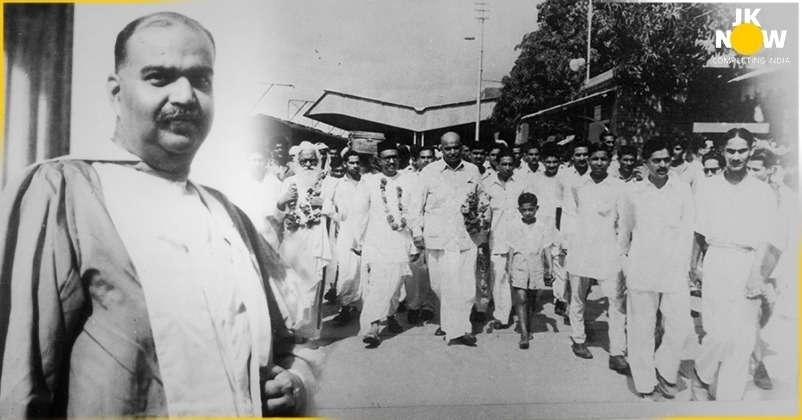
(source: JKnow)
Syama Prasad Mookerjee on Article 370: A factual analysis
Dr. Syama Prasad Mookerjee was of the clear view that the governance of the entire state of Jammu and Kashmir should be carried out in accordance with the constitution of independent Bharat. Sheikh Abdullah used to base the article 370 of the Bharatiya constitution against this.
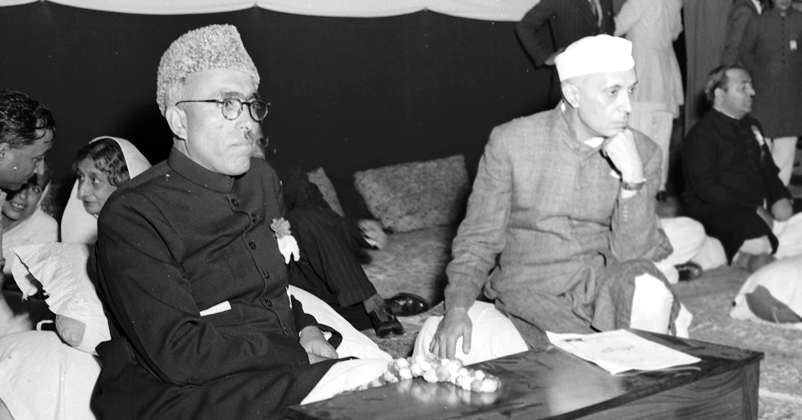
It is a testimony of the time that this alleged 1952 agreement between Nehru and Sheikh has caused a major blow to the unity of Jammu and Kashmir with the rest of the country.
Dr. Mookerjee, along with all the other leaders of the then opposition, repeatedly challenged it in parliament, but the ruling party strangled the truth by majority.
Then they were left with no choice but to go to the public. There was a movement led by Dr. Mookerjee across the country which culminated in his sacrifice.